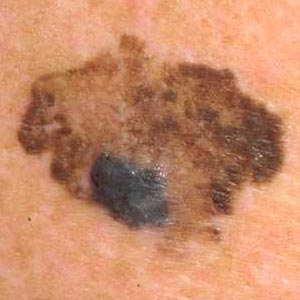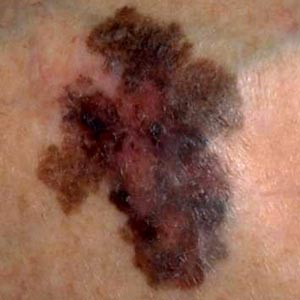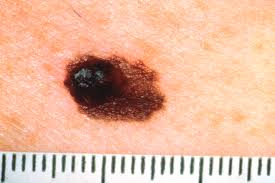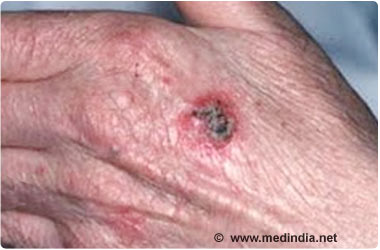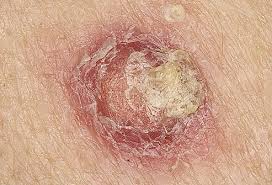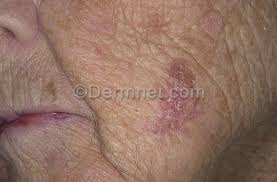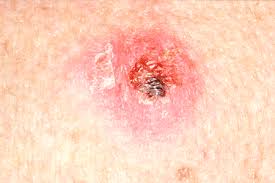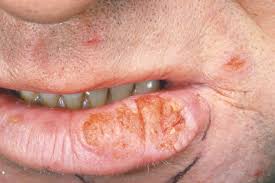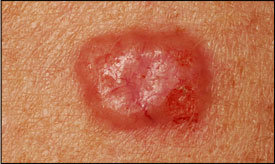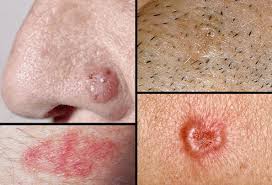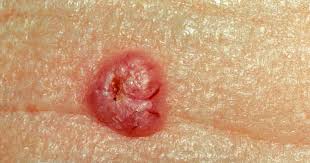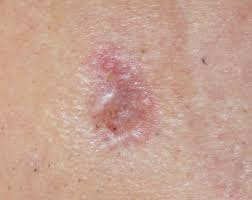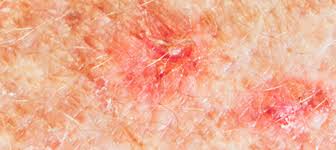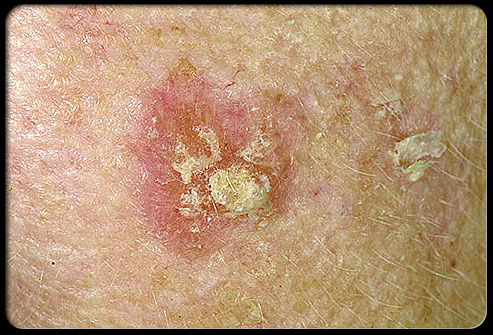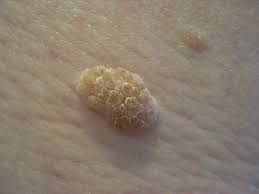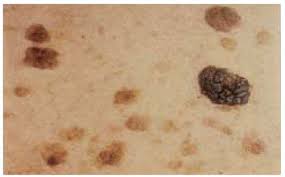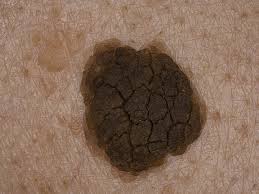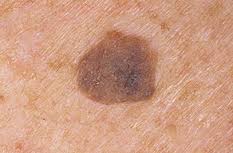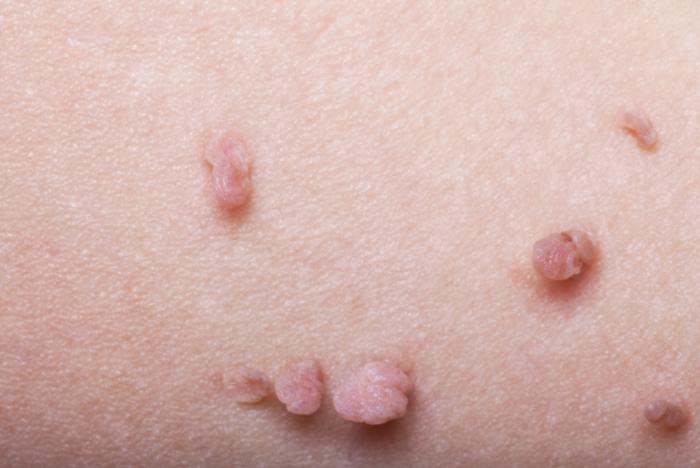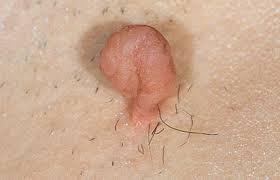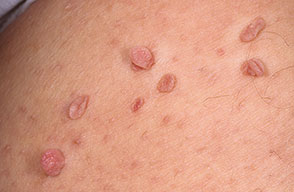Patients often see their family doctor to look at a worrisome skin spot or “mole.” Many types of skin spots are not worrisome and do not require any treatment. However, sometimes skin spots do need to be assessed and treated. This page will give you more information about some of the skin spots that you should know about.
MELANOMA:
By far the more worrisome type of skin cancer is a “melanoma.” These are rare, but they are extremely dangerous.
Melanomas are often very dark or black in colour. They appear irregular in shape. They can start as an odd looking mole and quickly progress.
** CLICK HERE FOR MORE INFORMATION ON HOW TO RECOGNIZE A MELANOMA, INCLUDING A EXCELLENT VIDEO **
See your doctor as soon as possible if you think you may have a melanoma!
Here some pictures of melanomas to help you recognize them:
SQUAMOUS CELL CANCERS:
This is a different type of skin cancer. They are less urgent than melanomas, but they still need to be assessed by a doctor and treated. They usually occur in sun-exposed areas of the body, like the head, face, lips, neck, back, arms, or hands. They come in all shapes and sizes. They often look red or pink. They often appear scabbed or raw.
See your doctor if you think you have a Squamous Cell Cancer.
Here some pictures of Squamous Cell Cancers to help you recognize them:
BASAL CELL CANCERS:
This type is skin cancer is the most common. It is generally not worrisome, but you still need to see your doctor or it will just continue to grow and grow. The larger it becomes, the more difficult it becomes to get rid of.
Basal Cell Cancers often look like open sores, red patches, pink growths, or shiny bumps. They often have an “erosive” or “dented” surface.
It is not urgent, but still see your doctor if you think you have a Basal Cell Cancer.
Here are some pictures of Basal Cell Cancers to help you recognize them:
SOLAR KERATOSIS (aka “Actinic Keratosis”):
These are very common to see on sun-exposed areas, like the face, scalp, arms, and hands. They often start as small, mildly red or pink spots that feel rough when you run your fingers over them. They can progress to become larger, more red, and with thick crusts on the surface. People often find that the crusts keep falling off, but then keep coming back, and the spot never heals.
Solar Keratosis are easily treated in your family doctor’s office with liquid nitrogen. They are not urgent, but if left untreated they can turn into a squamous cell cancer (see above for more information on squamous cell cancers).
It is not urgent, but still see your doctor if you think you have a Solar Keratosis.
Here are some pictures of Solar Keratosis to help you recognize them:
SEBORRHEIC KERATOSIS (aka “Seb K’s):
People often come to the doctor asking about these spots. They are extremely common and can occur anywhere on the body. Seb K’s usually appears as a brown, black or light tan growth. The growth has a waxy, scaly, slightly elevated appearance. They almost appear “stuck on” to the skin.
Although these spots look unusual, they are totally benign. You do not need to see your doctor for these spots (unless the spot has unusual features in it that may resemble one of the skin cancers above).
If you like, your doctor can often remove these spots, but this is service is considered “cosmetic” and is not covered by OHIP. Therefore, there is a self-pay fee to treat spots like these. (Click here for more information on uninsured fees).
Here are some pictures of Seb K’s to help you recognize them:
SKIN TAGS:
These are harmless, soft growths or “tags”. They tend to occur in areas of friction, such as in armpits, neck, or groin.
Skin tags are totally benign. You do not need to see your doctor for these.
If you like, your doctor can often remove these spots, but this is service is considered “cosmetic” and is not covered by OHIP. Therefore, there is a self-pay fee to treat spots like these. (Click here for more information on uninsured fees).
Here are some pictures of skin tags to help you recognize them:
** The above is simply a general guide to some of skin spots that you should know about. If you are concerned about a skin spot, please see your doctor for a proper assessment. **

